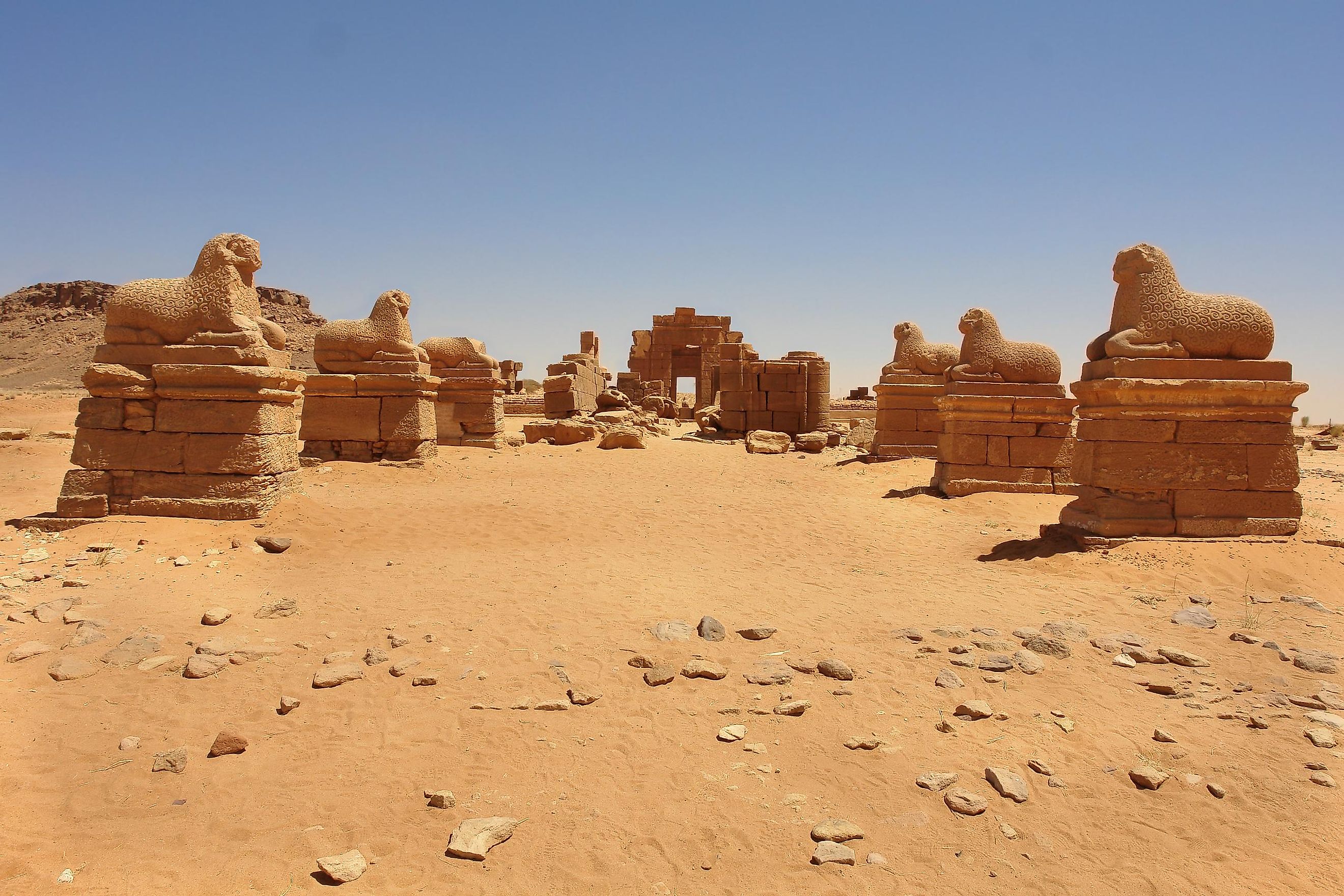
Naqa, The Ancient City That Was The Kushite Religious Stronghold
Naqa, also called Naga or Naga'a, was a vital religious and residential site of the ancient Kushitic Kingdom of Meroe, also known as the Kingdom of Kush – an influential Nubian force that spanned from the Mediterranean to the core of Africa and reigned from the 8th century B.C. to the 4th century A.D. The remnants of Naqa are amongst the largest collections of ruins in modern-day Sudan. This spiritual stronghold is marked by two strikingly well-preserved original temples, a Roman kiosk, other more dilapidated temples, and residential structures. Naqa, Meroe (the royal city and capital of the Kushite kings), and the settlement of Musawwarat es Sufra constitute the UNESCO World Heritage Site: Archeological Sites of the Island of Meroe. Naqa evidently bridged the gap between Mediterranean (most notably the Egyptians), sub-Saharan Africa, and Middle Eastern cultures over a lengthy period. Though a comprehensive understanding of its inner workings remains elusive, UNESCO's 2011 declaration has undoubtedly catalyzed this quest.
Where Is The Ancient City Of Naqa?
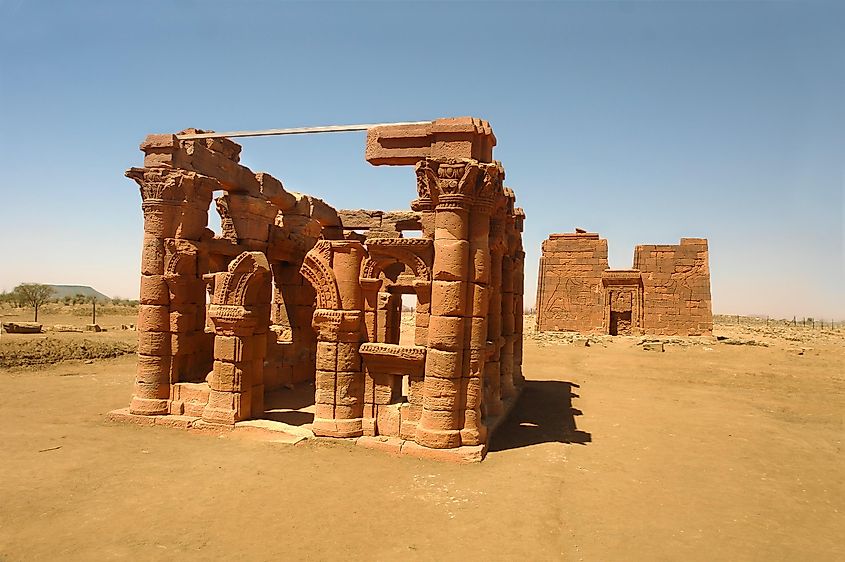
The ruins of Naqa, commonly referred to now as the Naga Archeological Site, sit in Eastern Sudan, in the River Nile State, just South of the small city of Shendi and approximately 110 miles Northeast of the nation's capital and largest city, Khartoum. The ancient settlement was strategically built at the foot of Jebel Ban Naqa mountain, about 31 miles East of the Nile River and West of the Atbarah River. Not only is it within a day's travel of the famous and benevolent waterway/trade route downstream from the rival/influential Egyptian Empire, but smaller wadis (i.e., channels that fill during the rainy season) made for fertile lands amidst the semi-arid landscape.
The Significant Structures Of Naqa
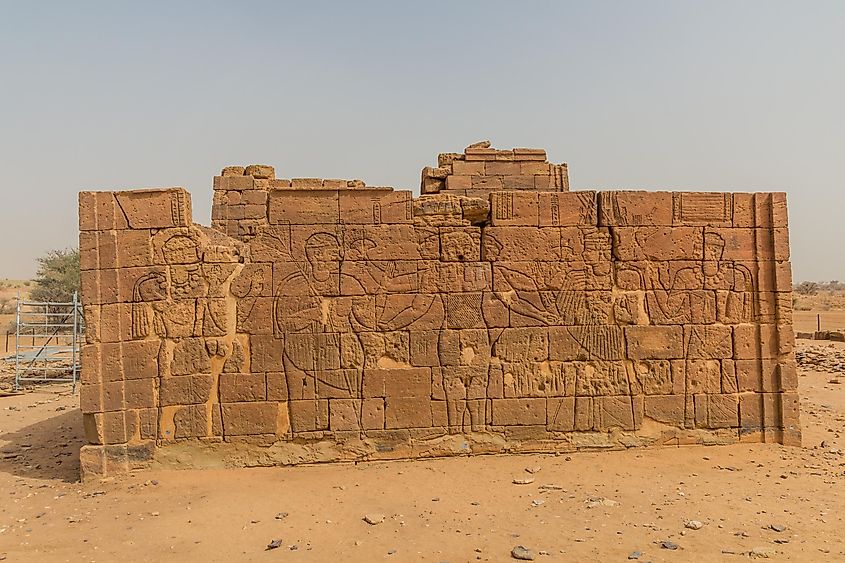
Many complex structures have been unearthed and cataloged across the large footprint of the ancient city of Naqa. But three standout structures demonstrate the importance of this site for the Kingdom of Kush. The first is the Temple of Apedemak, or the "Lion Temple," as it is also known, which is thought to have been built between about 1 B.C. and 20 A.D. This centralized megalithic monument was dedicated to the Nubian/Egyptian god, Apedemak, who is depicted as having the head of a lion and the body of a human and was a great warrior deity to the Nubian people. The temple also clearly shows two Kush rulers, King Natakamani and Queen Amanitore, on the front gateway, triumphantly slaying their enemies – the former with battle axe in hand and the latter wielding a slender sword. Also featured on the sides of this temple are the gods Amun, Horus, Isis, Mut, Hathor, Satet, and Amesemi, many of whom stem from ancient Egyptian, demonstrating the impactful cultural exchange between the two groups.
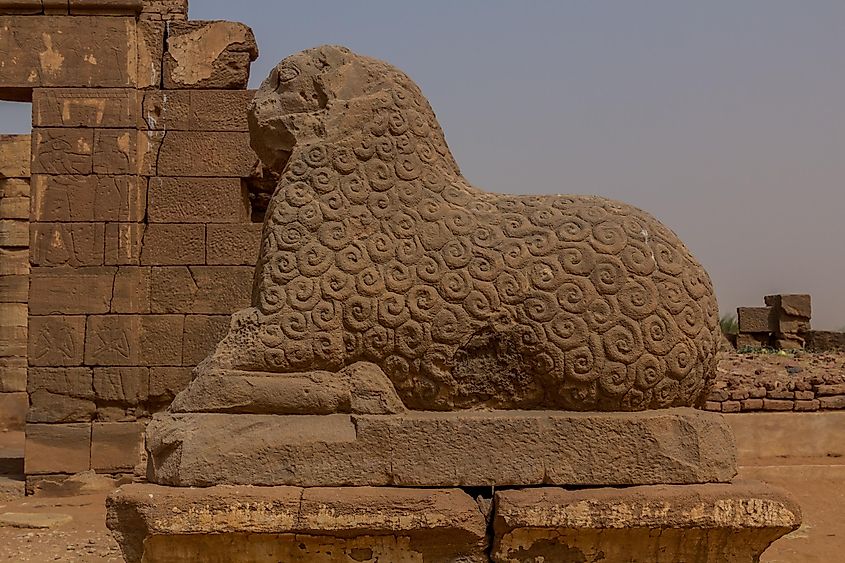
The impressive 328-foot-long Temple of Amun is another intact structure that possibly predates the Temple of Apedemak. Construction is estimated to have begun during Queen Amanishakheto's reign (41 to 12 B.C.) but was completed during King Katakamani's era. This place of worship was dedicated to the powerful Egyptian and Nubian/Kush god of the sun and air, also Meroe's national deity. It features grand colonnades with six ram statues, statues of the King, a life-size statue of the goddess Isis, and an Egyptian-inspired hypostyle hall that ushers visitors into the central temple. Within the inner chamber are undeciphered hieroglyphs and some of the best examples of Meroitic art. Curiously, there is a second but smaller Temple of Amun on a hill overlooking Naqa. It is believed to have been built by King Amanikhareqerem in the 2nd century A.D.
A Roman Kiosk (pavilion-style temple), also known as the Chapel of Hathor, also stands at the Naga Archeological Site, just a few strides away from the Lion Temple. This indicates that the historic empire moved through this region around the same time that it reached ancient Egypt. The architecture once again demonstrates the merging of cultures – with the rows of Uraeus cobras stemming from Egyptian influence, Corinthian columns from the Hellenistic style, and the classic arched windows of the Romans. This eclectic structure is thought to have been built in honor of the goddess Hathor.
A Brief History Of Naqa
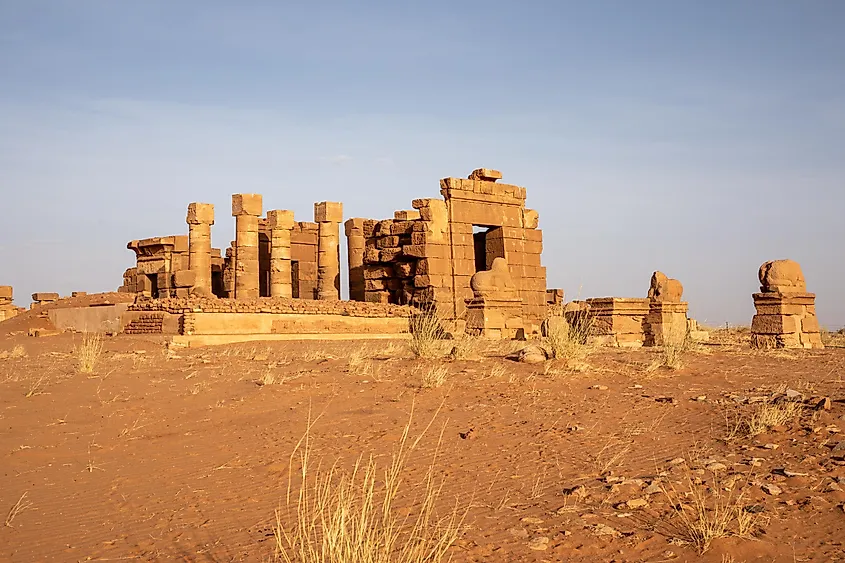
Remnants of Naqa have thus far been dated as far back as the 4th century B.C., though the Kushitic Kingdom of Meroe can be traced back another 400 years or so. It is, therefore, possible that the city of Naqa is even older than currently demonstrated. This pivotal civilization reigned until about the 4th century A.D. and was effectively erased by the 6th century A.D. when Christianity moved into the Middle Nile.
The first Europeans to rediscover the religious strongholds of Naqa arrived in 1822. Then, in 1837, German explorer, Hermann von Pückler-Muskau, came onto the scene and took detailed notes of his findings, both from here and Musawwarat es Sufra. Unfortunately, destructive treasure hunting also took place by Italian explorer Giuseppe Ferlini throughout the 1830s. Finally, in 1843, a Prussian Egyptologist named Karl Richard Lepsius began the first serious study and preservation of the area.
Further investigations unfolded throughout the subsequent century and a half, such as detailed excavations of the inner portion of the Temple of Amun in 1999 and the uncovering of the second Amun temple (i.e., Naga 200) on Gebel Naqa, but even still, so much about the language, religion, practices, and reign of the Meriotic people has yet to have been gleaned. Nonetheless, the significance of this megalithic city is unquestionable. A fact that led UNESCO to designate the Archeological Sites of the Island of Meroe as a World Heritage Site on June 25th, 2011.
Along with the Egyptians, the Kingdom of Kush was one of the earliest known civilizations to rise to prominence in the Nile valley of Northeastern Africa. While much has been decoded and cataloged about the ancient Egyptians, much less is known about the Nubian people that thrived in modern-day Sudan. The Archeological Sites of the Island of Meroe, which include the cities of Meroe, Musawwarat es Sufra, and Naqa, represent some of the most substantial ruins of the region and give tantalizing clues to the power and influence of the enigmatic Kushite culture. But despite the antiquity and acclaim, Naqa, and the remainder of this World Heritage Site, receives but a tiny fraction of the annual visitors compared to the tourist magnet to the North, Giza.











